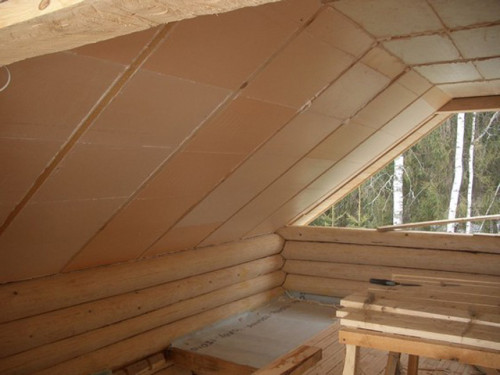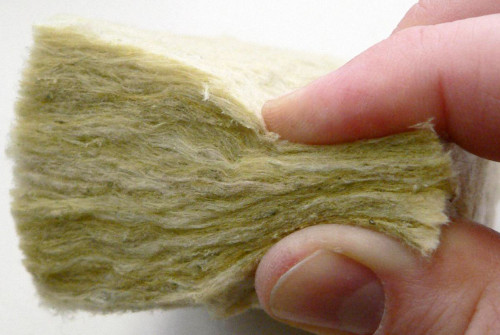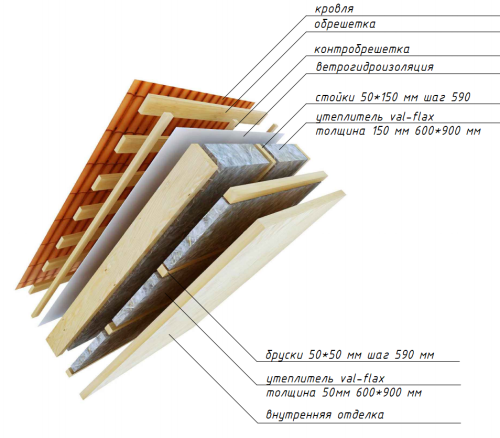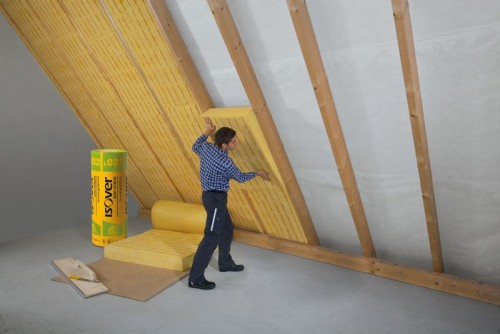
Mansard insulation from the inside: recommendations Insulation,Construction
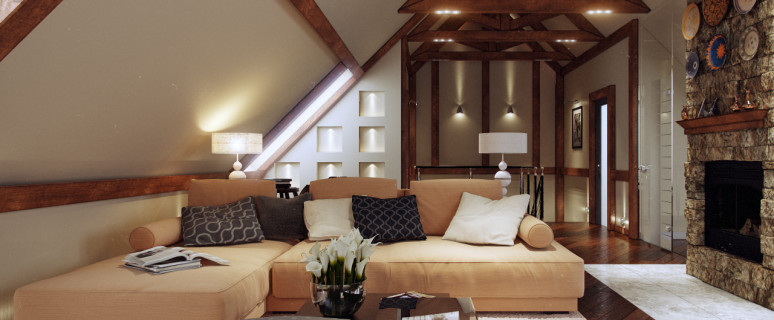
The attic floor is often a living area, which means it requires not only a beautiful decoration, but also high-quality insulation. On the intricacies of the insulation of the attic, about the materials suitable for this, as well as about the progress of work we will tell in this article.
Content
Rules of insulation of the mansarda
The room under the roof needs quality thermal insulation, but such space has its own characteristics that should be taken into account during the work. We form in the form of a list of criteria to be taken into account with the correct insulation of the attic from the inside:
- The first criterion is the configuration of the roof, which often does not correspond to the form of the right cube. This means that the thermal insulation layer will have to be laid on the inclined plane. If no problems arise with solid sheets, then soft rolled materials will be mounted with certain difficulties.
- Roofing structures are created mainly of wood and other lightweight materials with water-repellent properties, but not distinguished by good thermal insulation characteristics. In addition, the wooden lamp is often stacked with gaps, which further contributes to the loss of heat through the roof.
- The attic floor is not only the surface of the roof, but also Endow and the frontaths. If during the work does not insulate the nods of the attic from the inside, the whole effect of thermal insulation can be reduced.
- The roof is a place that accumulates condensate from a couple rising from the construction rooms. This means that the insulation, like other materials for the arrangement of the roof, should have good vapor permeability.
- When finishing the insulation of the residential premises, it is important to pick up non-flammable, as well as an eco-friendly material that does not harm health and will fireproof.
Types and characteristics of insulation for attic
Technologically for thermal insulation of the attic floor it is more convenient to use slab materials with sufficient rigidity and capable of keeping the form. Such insulation is easier to assemble on the inclined inner surface of the roof. To equip such thermal insulation, the longitudinal bars are first fastened to rafters. The size of these bars should be such that the roofing pie had the necessary ventilation gap to exit steam. The outer plane of these wooden elements should coincide with the inner plane of the rafter.
Tip: When insulating the attic from the inside, it is necessary to take into account the location of parts and nodes of the roofing design.
In the event that the insulation thickness exceeds the spreading width, the latter need to be equipped with additional bars, previously treated with them with antiseptic impregnations. Note that the ventilation clearance in the roofing pie must be present, regardless of the thickness of the rafter system.
Now I would like to consider the types of materials that can be used in the insulation of the attic:
- Polyfoam - slab and comfortable thermally insulating means. The cost of insulation of the attic of the attic from the inside of the foam will be very democratic, since such material is quite low price. The advantages of this insulation should include low weight, low thermal conductivity, ease of installation. Among the minuses can be called poor vapor permeability and attractiveness for mice, which settled in the roof and feed on foam. Among other things, in the case of ignition, the foam melts and emits poisonous substances into the air.
- Mineral wool also refers to low-cost materials with good thermal insulation properties. It is environmentally friendly, absolutely not lit, it has a small mass and passes a couple. Mount Minvatu enough even without using fasteners. To do this, only cut the plates, 2-3 cm large than the distance between the rafters. Elastic material will deal between the crossbars and will not fall out. An alternative to mineral wool can be a glass gamble, which has almost the same operational characteristics.
- Another insulation, which is sometimes used in mansard insulation, is extruded polystyrene foam. As a rule, its slabs are mounted on top of the rapid design, and a predetermined controlled control allows you to leave the necessary ventilation clearance under the roof. For interior decoration, this material is trying not to use due to high flammability and the ability to highlight toxic substances in the melting process, but it is quite suitable for thermal insulation.
- Polyurethan is a liquid sprayed insulation, which can be applied to any surface. This is the main advantage of the material, since they can easily be thermally insulated the roof of any, even the most complex configuration. To work with polyurethane foam, you will need a special installation, as well as a protective suit. Often, specialists are invited to such trim, so along with the price of the material the total cost of such insulation is quite high. But the material creates a solid monolithic layer on the surface without cold bridges, and also does not need to arrange an additional vaporizolation layer.
- Equata - another kind of sprayed insulation. The material of this type on its operational characteristics is similar to wood. Equata includes an antiseptic that additionally protects roofing pie from fungus and mold. Like polyurethane foam, Eco-out creates a solid seamless layer on the surface, which does not seek and does not determine for many years. Before starting the insulation of the attic of the attic of an eco-house, it is necessary to equip a cable ceiling with a crate on which a layer of vaporizolation will be fixed.
- The insulation of the roof of the attic from the inside can be carried out using foil materials. Their distinctive feature is a reflection of heat that rises from the rooms and can be disappeared through the roof. Foil materials in the installation process are placed so that the mirror layer is directed inside the room. In addition, a 5-centimeter ventilation gap should be provided between insulation and vaporizolation.
From this list of materials it is not difficult to choose the most suitable option for yourself, but it is worth noting that the mineral wool is considered the most popular and demanded means for insulation of the roof of the mansard from the inside. With its democratic cost, it has all the necessary characteristics and can serve dozens of years.
Features of the roofing cake
Let us consider in more detail, from which layers should be the right roofing pie, starting from its inner surface:
- Plasterboard plates that make the role of lining of the indoor walls of the attic.
- A layer of vapor barrier, which will be responsible for the elimination of the condensate. Parosolation is better to perform from a special membrane, laying her strips with an overlap at 10 cm and sinking them with a special scotch. In the finished form, vaporizolation should look like a solid solid shell without cracks and gaps.
- The next layer is the lamp. It is designed to hold the insulation, the vaporizolation membrane is attached to it, and then the lamp allows you to provide the necessary ventilation gap under the roof.
- Above the crate is the insulation, which is placed in one or a few layers.
- The next layer is a waterproofing material that does not give insulation to wet and protects it from premature damage.
- Then follows another layer of the crate, which is needed to ensure the ventilation space between the roof and the waterproofing film. This gap is necessary to weathering moisture, which accumulates on the water-repellent membrane. So that the condensate was to evaporate where special holes are provided in the base of the skates, the size of which depends on the type of roofing material. For example, for roofs decorated with slate, tile or professional flooring, these holes will be approximately 25 mm, for roofs covered with flat materials, the holes must be at least 50 mm.
- Above the second layer of the crates, windproof vapor barrier, which will help maintain heat in the house in the event of a strong wind. Such insulation is mounted above the rapid legs and fixed by the rails.
- The finish layer of roofing cake is the outer coating of the roof.
Mansard insulation technology from inside
Having considered the types and characteristics of insulation, as well as the structure of roofing cake, I would like to dwell on the process of thermal insulation of the attic floor. We describe the process of insulation of the attic from the inside on the example of Minvati, since it is the material that is most commonly used as of similar purposes:
Please note: the mineral wool is on sale in vacuum packages, which means it is in a compressed form. After opening such a package, the material is significantly increased in size.
Stages of work on the insulation of the floor under the roof look like this:
- First of all, you need to prepare, that is, to check whether the attic is well ventilated, as well as to protect themselves with the means of protection. These funds include transparent glasses, construction gloves and respirator. As a respirator, it will be enough to use the easiest "petal".
- The next step should be checked the evenness of the arrangement of the rafter. To do this, take a long aluminum profile and apply it to the rafter feet. If the bars are installed correctly, they will all touch the metal profile.
- After checking the evenness of the rafter, proceed to measuring the distance between them. Make it at least 2 places.
- Based on measurements, slabs of the necessary dimensions are cut out of mineral wool. The size of the fragments should approximately 2 cm exceed the distance between the rafters, then the wool will hold on between the bars on its own and it is not necessary to additionally fix fasteners.
- By installing minvati plates, they are slightly compressed and stacked into the intercremile space, where they take the initial shape. In the process of work, you need to follow, so that the insulation does not wrinkle and have not formed bubbles. If it happened, the slab must be entrusted to suitable sizes.
- Similarly, they laid minvat on the entire inner surface of the roof, without paying attention to even hard-to-reach places.
- The place of connection of the extreme rafter with the wall is close using the sealant.
- After that, under the roof laid vaporizolation, fixing the film using a construction stapler. Staples are driven with a step of no more than 15-20 cm. Separate parts of the film are laid with an overlap at 10-15 cm, and the joints of the joints are sampled by a special ribbon.
- Where the window openings are placed, there are special designs from wooden bars, observing a distance of 40-60 cm between them. Vertical bars are attached to the wall with self-draws, and then establish a base under them, which serves as a place to connect the film with plasterboard.
- This frame is filled with insulation as well as the rest of the roof surface.
- Then the insulation on the skates is closed with a film.
- Heated the frontones, the same way the roof ends are separated. Upon completion of this work, the framework of the metal profile is proceeded, which will be attached by plasterboard.
- Vertical metal parts are fixed in 50 cm increments, while the insulation is paved between them. Then, another layer of insulation is performed and covered with its metal racks.
- On the assembled frame is mounted vapor barrier film, and securing it with adhesive tape. Subsequently, when the walls are separated by plasterboard sheets, the film is additionally injected with self-draws.
- The last stage of the work is to carry out the finishing decorative decoration of the attic room.
As you can see, in the insulation of the attic from the inside with their own hands there is nothing complicated and all the steps can be independently. The time that will be needed on the whole process depends on the area of \u200b\u200bthe attic room.




